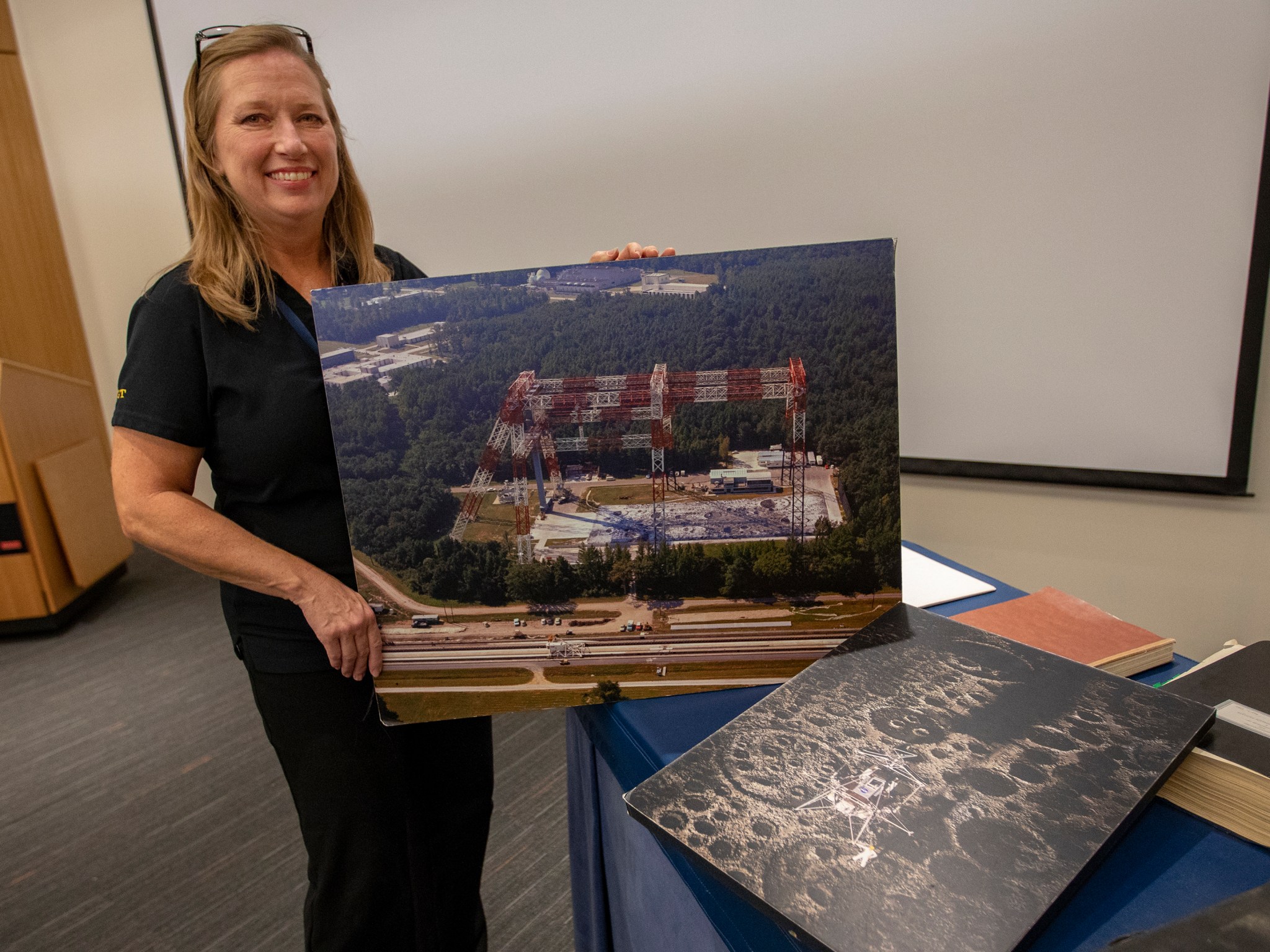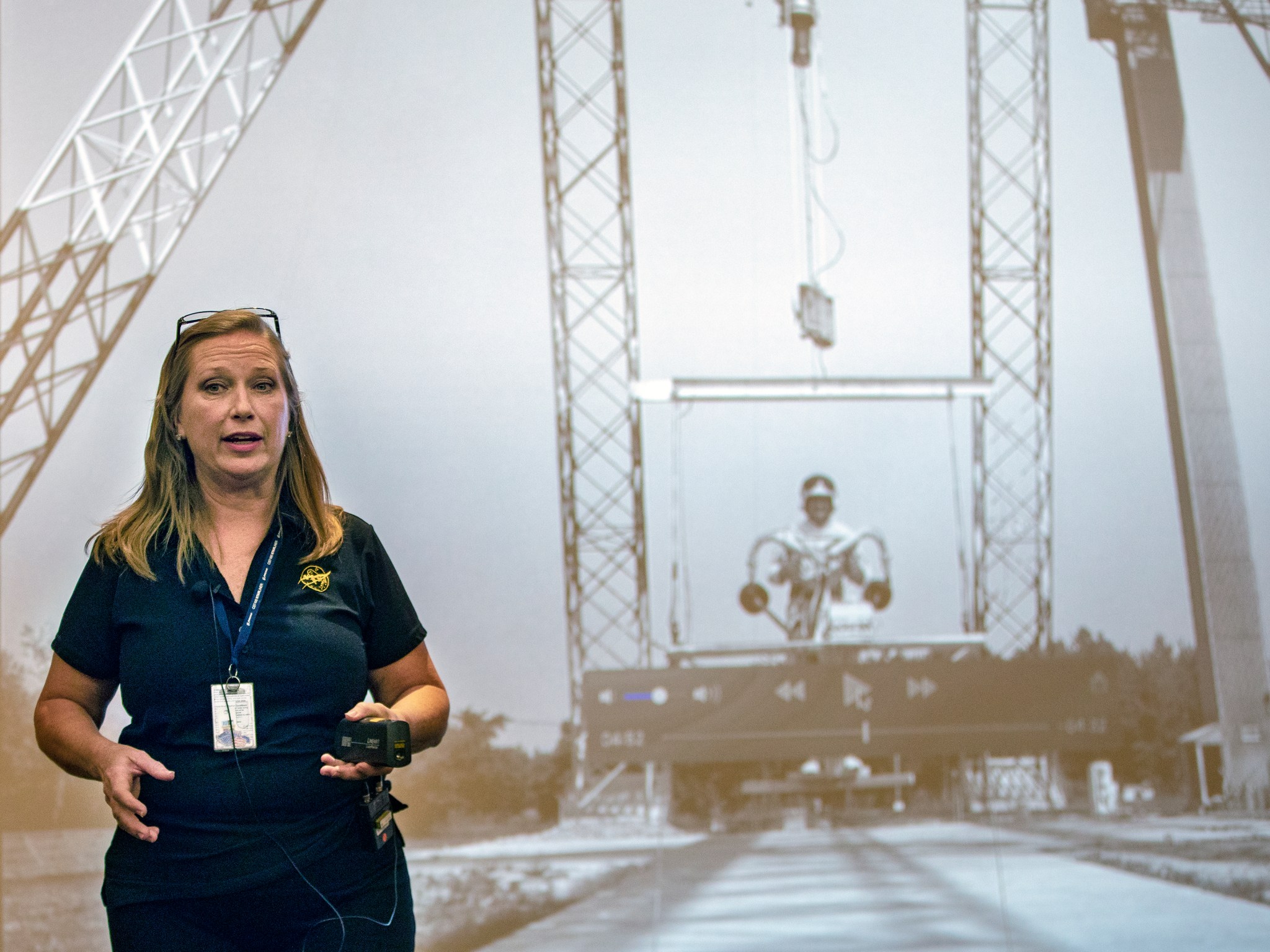Lisa Jones, facility manager for the Landing and Impact Research (LandIR) Facility, appreciates working at a living piece of Apollo-era history. So much so, she once saved historic documents with rocket trajectories and other significant Apollo data from the dumpster so future NASA employees and history buffs could also marvel at those artifacts.
“There were calculations and tables all done by hand and other documentation typed on a typewriter,” she said.
In celebration of the 50th anniversary of the Apollo 11 Moon landing this month, the contributions of the Lunar Landing Research Facility were remembered at NASA’s Langley Research Center in Hampton, Virginia. Construction documents, photographs of the construction and operations, anecdotes and videos of the gantry were shown with a focus on the safety of astronauts landing on the Moon.
“I think the quality was amazing for the time,” she said, referencing the realism of the simulations that taught astronauts how to land the lunar module and walk on the lunar surface.
The gantry is part of Hampton’s skyline, a 240-foot high, 400-foot-long, 265-foot-wide A-frame steel structure. However, many in the area are unaware of its integral role in the success of Apollo and the fulfillment of President John F. Kennedy’s vision.
The gargantuan gantry simulated the last 150 feet before landing on the surface of the Moon and allowed 24 astronauts to practice maneuvering in relative safety. They were also able to simulate the Moon’s 1/6th gravity, so astronauts could learn to walk on the lunar surface. Additionally, many of the tests were conducted at night to recreate lighting conditions on the Moon.
The gantry’s greatest compliment was received when a reporter asked astronaut Neil Armstrong what it was like to walk on the Moon, and he replied, “Like Langley.”
On May 25, 1961, President Kennedy went before a joint session of Congress with a bold challenge to land astronauts on the moon before the end of the decade. By May 1, 1962, a set of “Specifications for Construction of a Lunar Landing Research Facility (LLRF)” at Langley was delivered.
“Everything was done in less than a year” from planning, design, reviews and specifications to be completed and approved, Jones said.
The facility was constructed and became operational in 1965, which allowed astronauts like Armstrong, Michael Collins and Edwin “Buzz” Aldrin to train for Apollo 11’s final approach before landing on the moon July 20, 1969.
“It was just amazing what they could do at that timeframe,” Jones said.
After the Apollo program concluded in 1972, a new purpose emerged for the gantry – aircraft crash testing. The facility has performed full-scale crash tests of General Aviation aircraft and helicopters, system qualification tests of Army helicopters, vertical drop tests of Boeing 707 and composite fuselage sections and drop tests of the F-111 crew escape capsule. In recent times, the LandIR Facility conducted Orion water impact tests, Boeing and SpaceX Commercial Crew module landing tests, and dropped a Fokker 28 aircraft.
In 1985, the structure was named a National Historic Landmark based on its considerable contributions to the Apollo program.
Eric Gillard
NASA Langley Research Center




























